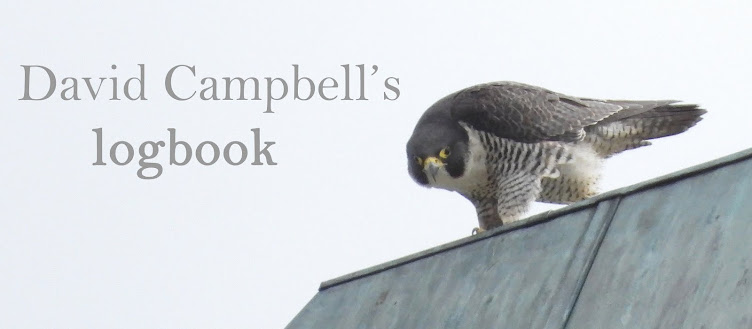 |
| Hawfinches, Juniper Bottom |
I started the day at the patch, with a fly-over Cormorant being a just about due year tick (62). Also 5 Canada Geese over, my third sighting of the year. Jamie arrived and after a little while we headed off, picking up Josh on the way, to Mickleham in the hope that a visit to Juniper Bottom at the same time that Steve had his dozen Hawfinches yesterday might reap a reward. We arrived on site and set up at the area, immediately hearing the tsiks, twiks and tsuks of clearly a number of Hawfinches in the tall conifers on the right hand side of the path. After a short while, birds started diving in their dozens into the yews on the other side of the track while more continued to call to the right. We were gobsmacked and had no idea how many there were but it was well over thirty at that point. Later, a massive flock erupted out of the pines and flew south east along the valley, we independently counted this flock as sixty-odd birds. Calls continued to come from the original location and after a short while another load flew up and circled before landing nearby, Jamie and Josh counting about forty in this group while yet more calls from the yews. So, we all reckoned a conservative count of ONE HUNDRED birds was on. It could well have been a bit more but probably wouldn't have been more than 130. At one point fifty birds were visible in one scope view sitting in a bare tree further down the valley.
The birds themselves were, as always a pleasure to watch as individuals but the sight and sound of such a number of these scarce finches was just mind-blowing and almost unbelievable. As you'll see from my previous post, we had no luck at all yesterday afternoon, and apparently birders had nada this afternoon too so it seems like they are a morning job if you're planning on visiting.
Here's directions:
"Park at the Whitehill car park on Headley Lane at TQ 176 529 and walk SSE for c650 yards till you reach tall conifers on your right with open leaf litter bottom (shortly before pile of ash surrounded by stakes), this is TQ 180 524 - the birds spent a lot of time in these pines and also flew to feed in the yews on the other side of the path and also visited bare deciduous trees further down."




